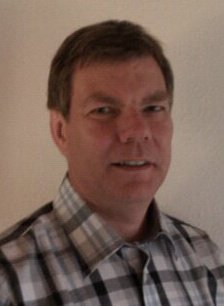Meet an employee at IFA
Monthly contribution from Niels Carl Hansen

Tell us briefly about your path to IFA/AU.
I have a master's degree in mathematics/physics with a major in mathematics. During my master's studies, I studied an additional minor in computer science, and at the same time I got a student job as an operator/programmer at RECAU - "The Regional EDB Center at Aarhus University", where after graduation I was offered permanent employment as an assistant professor at the center. In the meantime, RECAU had merged with its sister organizations at KU and DTH (DTU), under the name "UNI-C, Denmark's EDB-Center for Research and Education", where I was associated with the "Supercomputer Group".
Strong forces in Physics, Astronomy and Chemistry at AU together with the faculty managed to convince UNI-C to install a supercomputer in Aarhus, an Alliant FX/3. I was put in charge of system administration, operation, support etc. of this machine.
In 2002, the CSCAA "Centre for Scientific Computing, Aarhus" was formed at AU, as an operating center under the faculty. Prof. Niels Egede Christensen was the first director, and I was brought in as the first – and only – employee. The center is alive and well to this day, however, it has been administratively moved under IFA with Prof. Lars Bojer Madsen as director. Hanne Bak, Ian H. Godtliebsen and myself are employees of the Centre. Our main facility is "Grendel", - a relatively large Linux cluster, consisting of 500+ computers.
Name three things that you value about your work.
First of all, I think that IFA/AU is a professionally inspiring place to be. High Performance Computing (HPC) is gradually being used in many research disciplines, and it is a great satisfaction to be a part of it. It is particularly interesting to follow how machine learning (ML) and artificial intelligence (AI) are gaining ground all around.
Next, I would like to highlight the many contact points the work provides to many different professional groups at - and outside AU. Planning, procurement, operation, maintenance and support of an HPC facility requires close cooperation with, among others, the grant holders, the users, Building, Procurement, Finance, suppliers, service people etc. Finally, I would like to point out the freedom to decide to a large extent on one's own time for new projects, etc.
What work accomplishments are you most proud of?
The first incarnation of Grendel dates all the way back to 2005. It was not the first cluster I made, as both Bjørk Hammer and Lars Bojer/Klaus Mølmer have previously had clusters made up of 30-40 PCs on racks, but with Grendel everything had to be designed from scratch, with a particular focus on scaling. Eg. construction of network and storage topologies, cloning, node naming, software stack, physical location, electricity, cooling, etc. Now, almost 20 years later, it turns out that quite a few of the choices that were made then still hold – with certain modifications over time, of course.
What do you do in your spare time?
Together with my wife, Jane, I live in a house in Solbjerg. There is always enough to do when you have a house, and as the family has grown with children, children-in-law and grandchildren, time at the weekends is scarce. I play badminton and am interested in history, especially European 19th century history.
